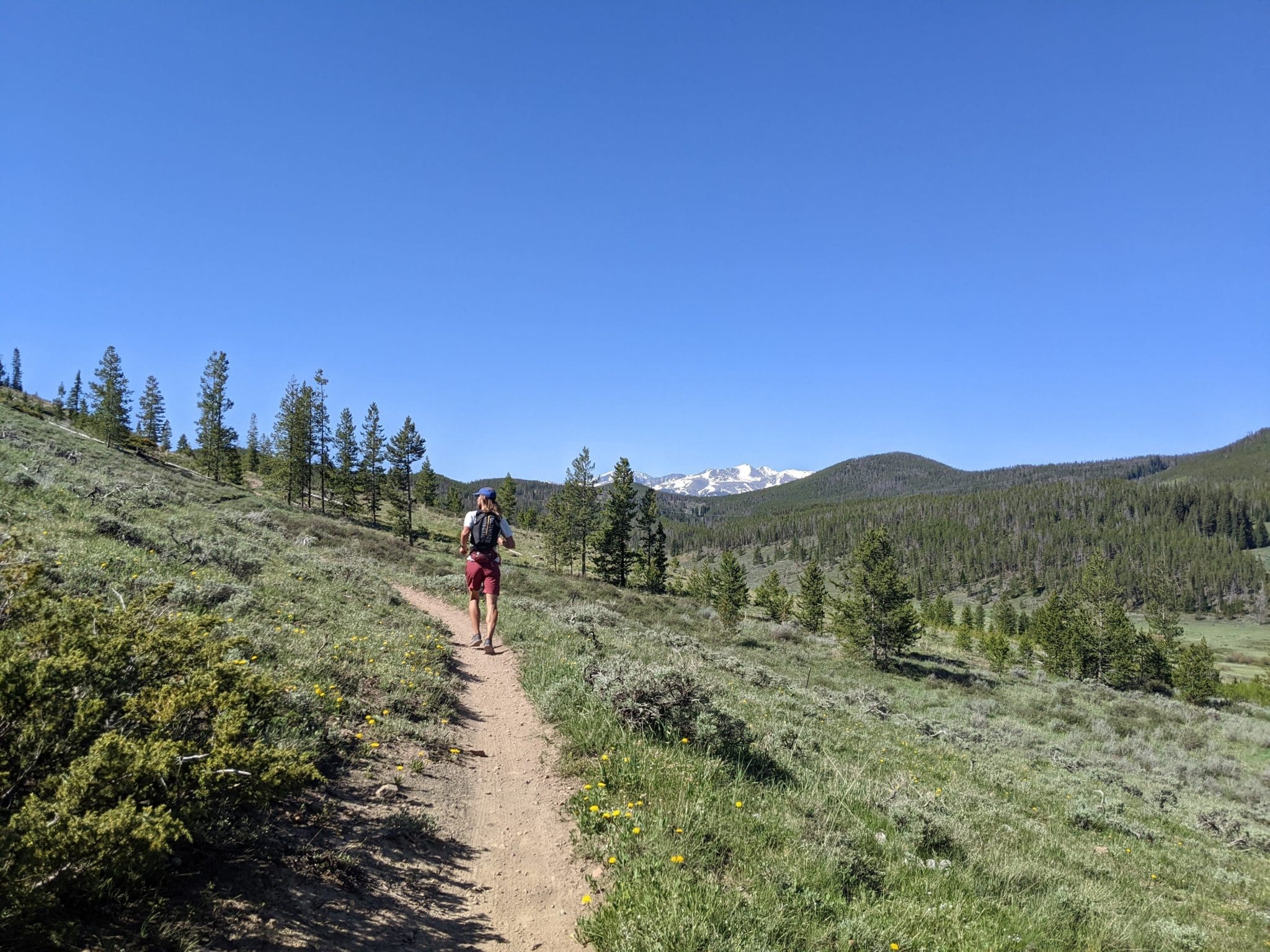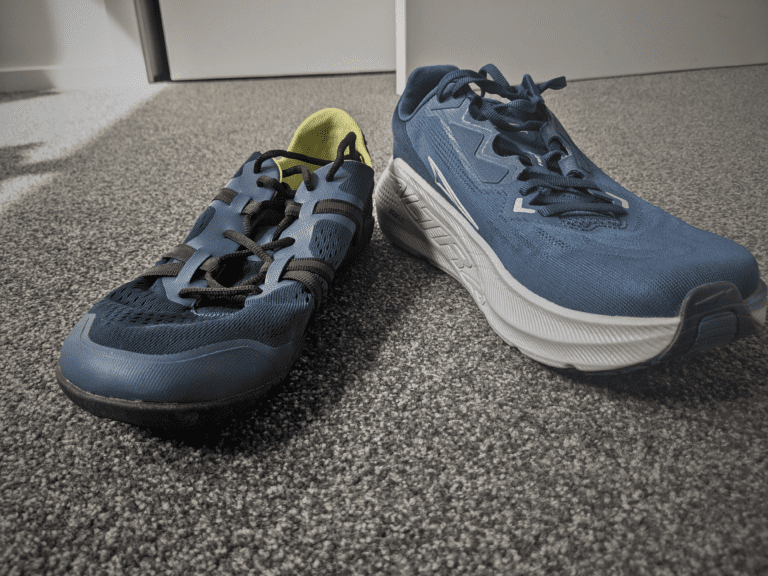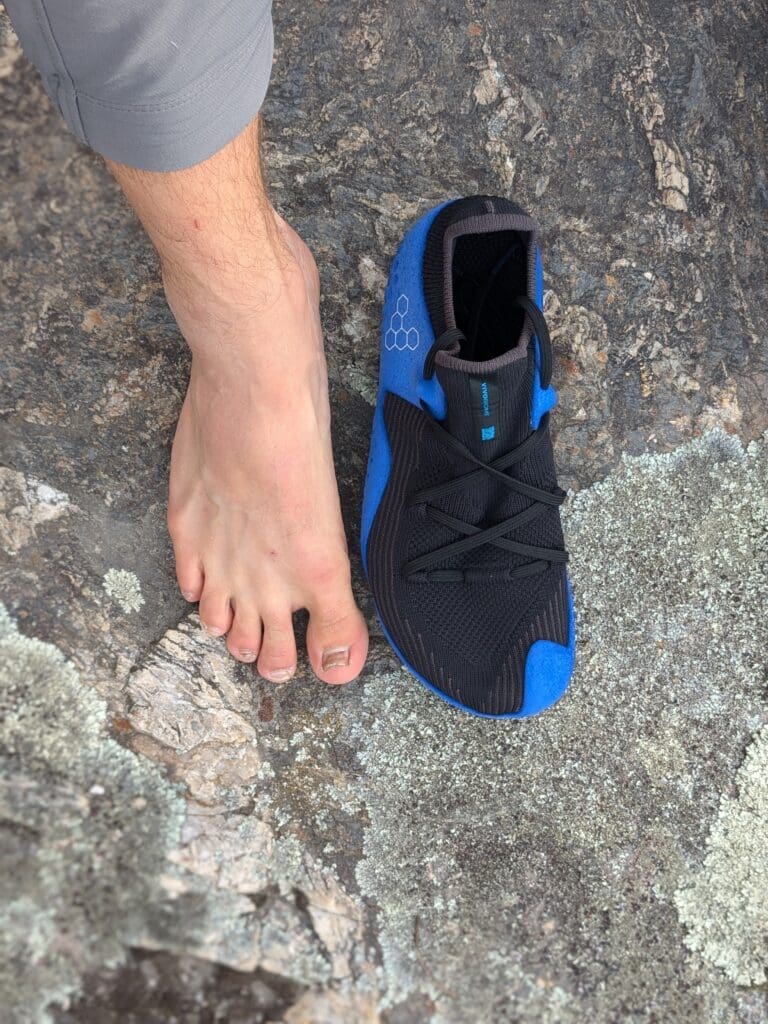Barefoot running.
We’ve been on this hype train before. Born To Run? Vibram Five Fingers? “You’ll never be injured again.”
Sadly, over a decade ago, idealizations and the swell of the barefoot movement grew far too fast, spread lies, and introduced unsustainable practices.
At Barefoot Run Review, we want to introduce a new path.
One that utilizes barefoot and minimal running for its inherent benefits but still leaves room for other ideas and philosophies regarding running shoe technology.
In this blog post, I want to introduce why barefoot running is a fantastic tool in your arsenal and then move into areas where conventional running shoes have advantages and disadvantages.
At the end of the post, you’ll be able to formulate your understanding of how barefoot running could fit into your running life and work out when and where to use conventional running shoes to their maximum potential.
Affiliate Disclosure: By clicking through the links on this page and purchasing the products, you’ll be helping me out. This is done because I receive a kickback from the sellers at no extra cost to you! Thank you so much for supporting us!
There are many reasons you may want to start barefoot running, but here at Barefoot Run Review, we’ve got our unique take.
Answer me 1 quick question.
Do you incorporate strength work into your training plan?
Something along the lines of…
- Weight lifting
- Yoga
- Bodyweight exercises
- Prehab routines
My guess is that your answer is “yes.”
If you answered no, you’re leaving some amazing gains on the table. I’ll leave Jason at Strength Running to convince you of that.
Now, focus on the lower legs and feet. Do you do strength-specific workouts for your feet, ankles, and calves?
Maybe?
Well, what if there’s one training modality that could strengthen the whole body from the foot to the head AND improve your running technique? Would you take it?
Of course, you would!
Ok, so what training modality am I talking about?! You guessed it…… Barefoot Running.
Barefoot Running is like strength training; only you get to go running. My favorite type of strength training. 😀
Running barefoot or in minimal shoes loads the body and legs differently from conventional shoes.
Because there’s no soft cushion underfoot, you’re forced to soften the ground impact using your muscles and connective tissues, solidifying and strengthening your foundation and making you more resilient for the future.
There’s also no structure, motion control, or stabilizing materials you would typically find in conventional shoes, so again your feet, ankles, and the whole body have to do the work to stop you from falling into a heap of mess into the ground! Strengthening the entire body.
I’m not 100% against the conventional running shoe market. Hey, I used to work in a running shoe store after all – so I’ve sold plenty of them!
I believe conventional shoes have their time and place, but should you use them for 100% of running mileage? Not really.
What are “some” conventional shoes good for?
Speed. Adding more cushion under your foot allows you to extend your stride, and if you extend your stride and keep the same cadence, you run faster!
This is the fundamental reason the new super shoes like Nike 4% made runners faster. Not because of the questionable carbon plate!
Trail Conditions. I’m an avid trail runner; if you are too, you know that trails come in all varieties. Some are buffed out with a light dusting of dried mud, but some are gnarly, sharp, and ready to spike you.
So how do minimal shoes fare on those sharp, aggressive trails? No great…. You even slow down to a snail’s pass to precisely place your feet on the smoothest part of the rock. Or you risk injury when going hell for leather.
Adding a little cushion, maybe a rock plate that stiffens the shoe, makes trail running a more pleasurable experience.

The case against conventional running shoes
Here’s a quick hypothetical for you.
You break your neck and must wear a neck brace to immobilize your neck to save yourself from further damage. Do you wear a neck brace for the rest of your life?
No. You slowly reintroduce neck movement to retrain the essential mobility and muscle structures back to natural movement.
Thinking about today’s footwear, it’s much like a neck brace.
Conventional shoes are stiff and reduce movement in the lower legs and feet, which weakens the movement structures in your foot, ankle, and most of the body, just like when you wear a neck brace.

So, conventional shoes make much of your body weaker. But it doesn’t stop there.
Large amounts of cushion completely changes our running gait. We end up striking the ground with our heels, compressing into the cushion, and collapsing in the weakest direction of the shoe. Putting a huge strain on your foot and ankle structure.
And this cushion is the whole reason why the running shoe industry introduced “stability” or “motion control” shoes! An issue created by the running shoe industry in the first place.
Ever been told you over-pronate (ankle rolling inwards)?
Don’t worry. You just need to strengthen your foot, ankle, and lower leg.
Pronation is a natural movement to help soften the ground impact and recover energy during push-off. But after habitually using conventional shoes, your foot and ankle joints have likely become weak, and you begin to “over”pronate.
It’s a similar case for supination (ankle rolling outwards) too.
There are pros and cons to both barefoot running AND running in conventional shoes.
And that’s why I’m proposing that barefoot running can be used as a tool to reduce injury risk and make you a more robust, faster runner.
You can reap the rewards of barefoot running without having to run every single training session in minimal shoes.
If you’re looking to run your fastest 10km or heading out on a super rocky trail, barefoot may not be the solution. Maybe reach for some Altras?
But if you want to introduce a tool to your training plan that can help strengthen your body, reduce injury risk, and make you fast in your next race, all without adding more training sessions, I’d tell you to give barefoot a try.
So what’s next?
Hopefully, you want to give barefoot running a try.
Quick hint. Don’t just put on some barefoot shoes and head for a run. You will get injured!
- Learn what the first step toward barefoot running is! Hint: It’s not running. 😛
- Find the right minimal shoe for you! – I’ve put together a minimal shoe quiz to help you find the right minimal shoe for your foot shape and preferred feel.
Which minimal running shoe is for you?
Take a quick 5-question quiz to identify the perfect minimal running shoe for your feet! You'll get both road and trail options based on your answers!



